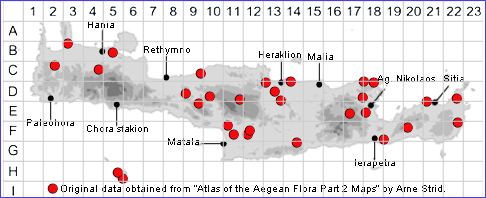
SPECIES DESCRIPTION
SINAPIS ARVENSIS
Family and Genus:- See- CRUCIFERAE
Common Names:- Charlock
Homotypic Synonyms:- Brassica arvensis, Raphanus arvensis,
Rhamphospermum arvense, Sinapistrum arvense.
Meaning:- Sinapis (Gr) A name used by the Greek philosopher Theophrastus for
mustard.
Arvensis (L) Of the cultivated/ploughed field.
General description:- Annual.
Stems:-
1) Up to 80 cm, usually hispid at least below, but, sometimes glabrous.
Leaves:-
1) Up to 20 cm, usually hispid.
a) lower, petiolate, lyrate, with a large, coarsely toothed terminal lobe, usually
with several smaller lateral lobes.
b) upper, more or less sessile, usually simple, ovate to lanceolate.
Flowers:-
1) Petals, 10-16 x 5-8 mm.
Fruit:-
1) Siliqua, 25-45(-55) x (1·5-)2·5-4 mm, patent to erect; valves glabrous or with
short, stiff, deflexed hairs, beak, 7-16 mm, straight.
2) Seeds, (7)8-13, reddish-brown or blackish.
Key features:-
1) Siliqua, at least 25 mm, glabrous or with short, stiff, deflexed hairs.
2) Beak, cylindrical or conical, not or scarcely compressed, shorter than to about
equalling the valvar portion of siliqua.
3) Seeds, (7)8-17.
Habitat:- Weed of cultivated fields orchards and roadsides, rarely in semi-natural
habitats by wood margins etc., 0-500(-1400).
Distribution:- Throughout Greece. - Probably native to the Mediterranean area now
an almost cosmopolitan weed. Somewhat scattered across Crete.
Flowering time:- Late Mar to June. sometimes later.
Photos by:- Courtesy of Wiki-Commons
